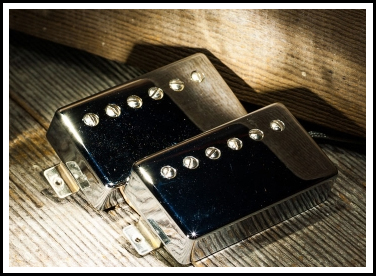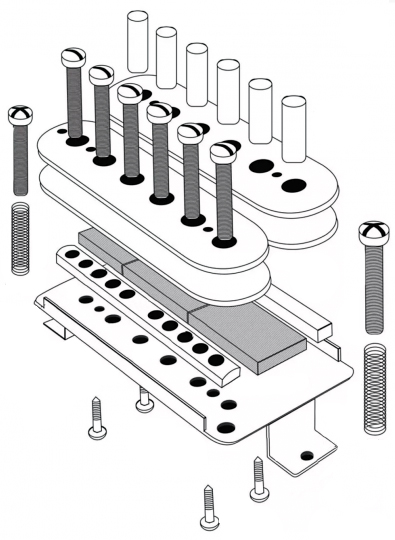
The term humbucker probably brings to mind the “Gibson” sound, or rather – and more specifically – the “Patent Applied For” or “P.A.F.” sound. The pickups made by Gibson in this narrow time frame, spanning from the late ’50s to early ’60s (though the patent was officially awarded in 1959) have become synonymous with what a humbucker “should” sound like. Never mind the fact that rarely would you ever find two P.A.F.-era pickups that share the same exact sound, but that’s a whole other topic unto itself. Because of this, what is now considered a traditional humbucker has become as much form as it is function.
The reality is that there are countless pickups that are, by definition, humbuckers, and many don’t even look anything like the image likely floating around in your imagination when you hear the term. Any pickup that is designed to reject hum (60 cycle, 120 cycle, etc.) is a humbucker.

Because of the confusion in the moniker alone, it’s no wonder that many might assume that two pickups that appear to be identical would sound the same, but they may very well be mistaken. There’s more than meets the eye, as you will see… er… hear… Our friend, Jeff Senn, has made this great video to demonstrate the differences between several of our humbucker models; though similar in execution, the dB, Imperial, and El Rayo humbuckers all feature various different design elements throughout, offering totally different tonal result.
For the making of the video, Jeff installed the pickups into the same guitar, using all the same components, signal chain, amp, and settings to give the most parallel comparisons between the various pickups and to offer the best possible frame of reference when contrasting the different strengths of each model.
Now, of course, this doesn’t feign to address all of the different humbuckers in the world – or even all the options just in OUR humbucker product catalog – however, it gives a good example for anyone considering some of the more popular and most easily comparable humbucker offerings from Lollar. Which one is best for your needs? Well, that’s something that only you can say for sure – hopefully this video will help you make that decision a little more easily.
